Growing Grit: Resilient planting in aggregate substrates
TEXT BY BEN O’BRIEN
Designed plant communities have been my professional focus since graduating from the BLA program at the University of Guelph in 2014. This focus has led me to different symposia and conferences, none more influential than the inaugural Urban Growth Conference held in Lund, Sweden, in September 2017. With its emphasis on the mechanics and performance of designed plant communities in urban environments, the conference opened up a world of new knowledge. James Hitchmough, a University of Sheffield professor of horticultural ecology, and one of the leaders in the field, led a particularly insightful session looking in detail at his own planting successes and, notably, failures. The failures were often due to an invasion of aggressive plants that, when left unchecked because maintenance resources were sparse, overwhelmed desirable species. The lesson was that an ideal situation is one in which plants can establish without weed pressure and quickly knit together to form a dense community that weeds can’t invade easily.
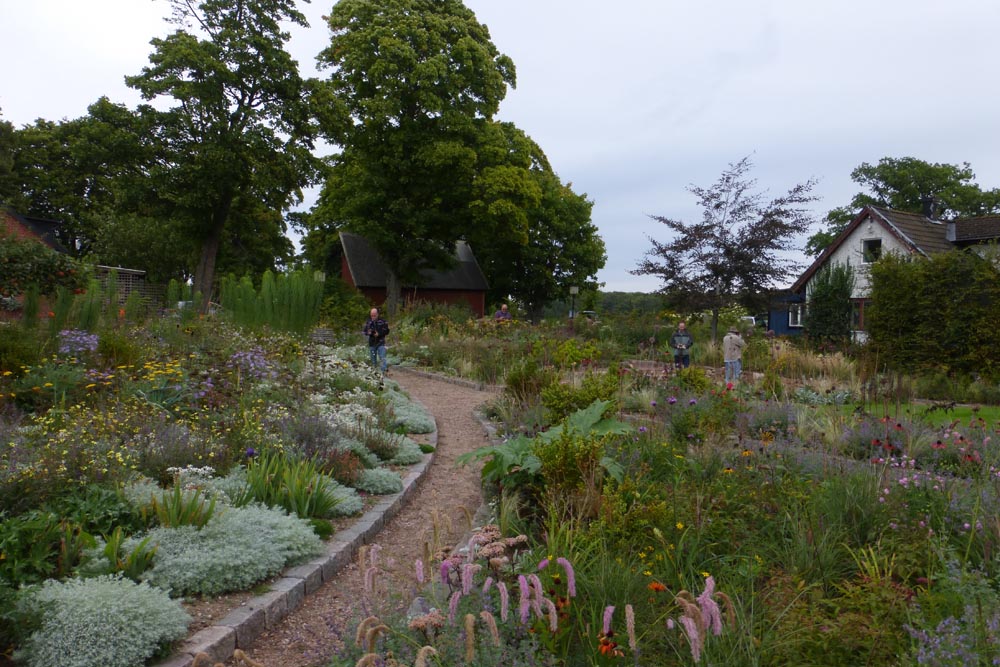
To create the best foundation for long-term success, the designed plant communities developed by leading practitioners, including Hitchmough and fellow Sheffield professor Nigel Dunnett, Cassian Schmidt and others in Germany, and Peter Korn in Sweden, all start the same way. Rather than planting into existing or imported topsoil, plants are installed into a layer of sterile aggregate-based substrate, ranging in depth from 10 cm to 20 cm. Substrates used range from coarse sand to small gravel. While it sounds paradoxical, these soilless substrates have numerous benefits. Unlike organic bark mulches which decompose over time, aggregate substrates are permanent. Unlike soil, they contain no weed seeds. Rapid drainage ensures the surfaces of substrates dry quickly, so weed seeds that blow into planting areas are unlikely to germinate. They resist compaction and can handle periodic foot traffic without the soil underneath being damaged. Even in the heat of summer, when most soils are dry, hard, and impermeable, aggregate substrates are still able to infiltrate rainwater. Finally, aggregate substrates offer the opportunity to re-use waste materials such as crushed brick and recycled concrete.
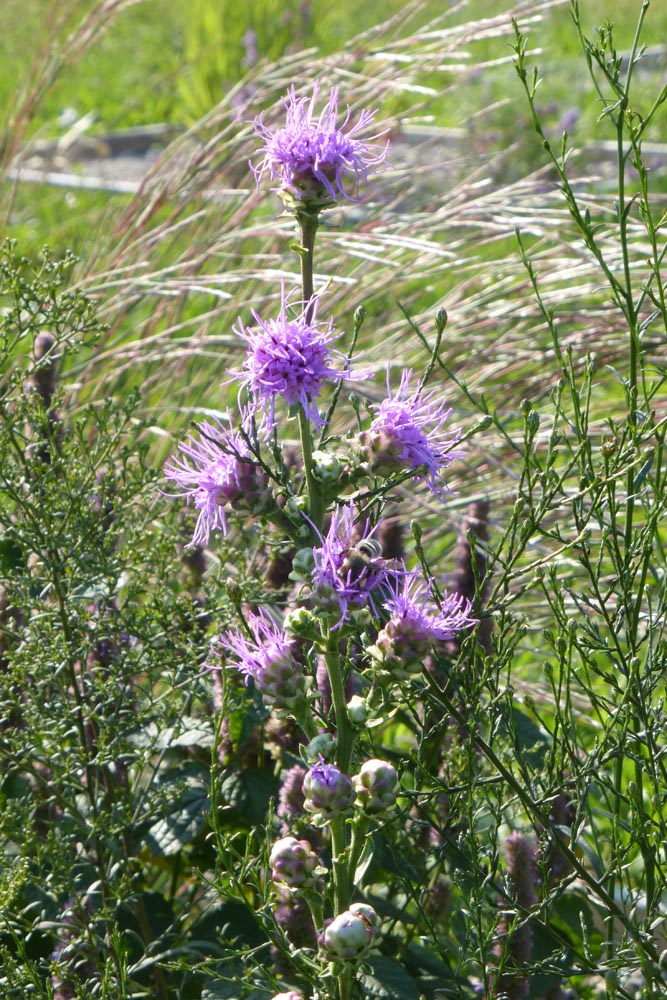
Buoyed by the ideas presented at the Urban Growth Conference, I decided to put them into action in a trial garden on a sun-baked area of lawn at an elementary school in Prince Edward County. In late May of 2018, with the help of a grant from the Landscape Architecture Canada Foundation, I constructed, laid out, and planted 12 trial plots with 48 different species of herbaceous perennials and grasses. The goal of the experiment is twofold: to evaluate how a range of plants perform on different aggregate substrate mixtures, and to investigate which substrates prove most weed-resistant.
The existing turf and soil on site were stripped to varying depths (15 cm, 20 cm, and 30 cm), and timber-framed beds were placed over the existing subsoil and filled. Eight large plots were filled with a combination of crushed recycled concrete, coarse sand, and compost from a nearby green-waste processing facility. Four of these plots were mulched with a 1:1 mixture of crushed concrete and sand, to investigate whether or not a compost-free top layer better inhibited the germination of weed seeds. Four small beds allowed for experimentation with planting into thinner (approximately 15 cm deep) layers of either pure recycled concrete or the 1:1 mix of crushed concrete and coarse sand.
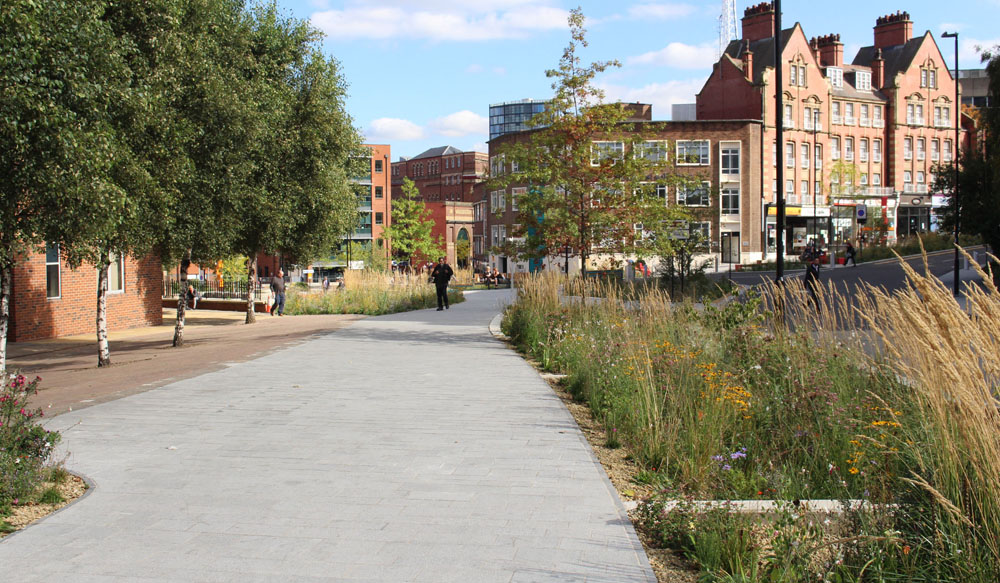
The plots were irrigated regularly, on nine separate occasions, during the growing season of 2018. Most of the watering occurred within the first month, post-planting. (Providing an initial period of coddling helps plants form the robust root systems that will equip them to handle droughts in future years). Despite a hot, dry August and September, only one additional watering was required after July 6. As the experiment continues, the plots will be forced to survive on rainfall alone. This will determine which species are ultimately best suited to the conditions.
In September 2018, with funding from Community Futures Prince Edward Lennox and Addington, a second round of building took place to test a further range of species and substrate combinations and, most importantly, how plants perform after fall planting. Substrates included a mineral component (3/8 inch crushed limestone, 3/8 inch granite pea gravel, high-performance bedding limestone screenings, or a combination thereof), combined with small amounts of compost. In some plots, the substrate was top-dressed with a 1- to 2-inch layer of pure aggregate (either 3/8 inch crushed limestone or 3/8 inch granite pea gravel) to test whether a “crust” of gravel further inhibits the germination of in-blown weed seeds. Thanks to plentiful autumn rains, the fall-planted plots were only irrigated twice after planting.
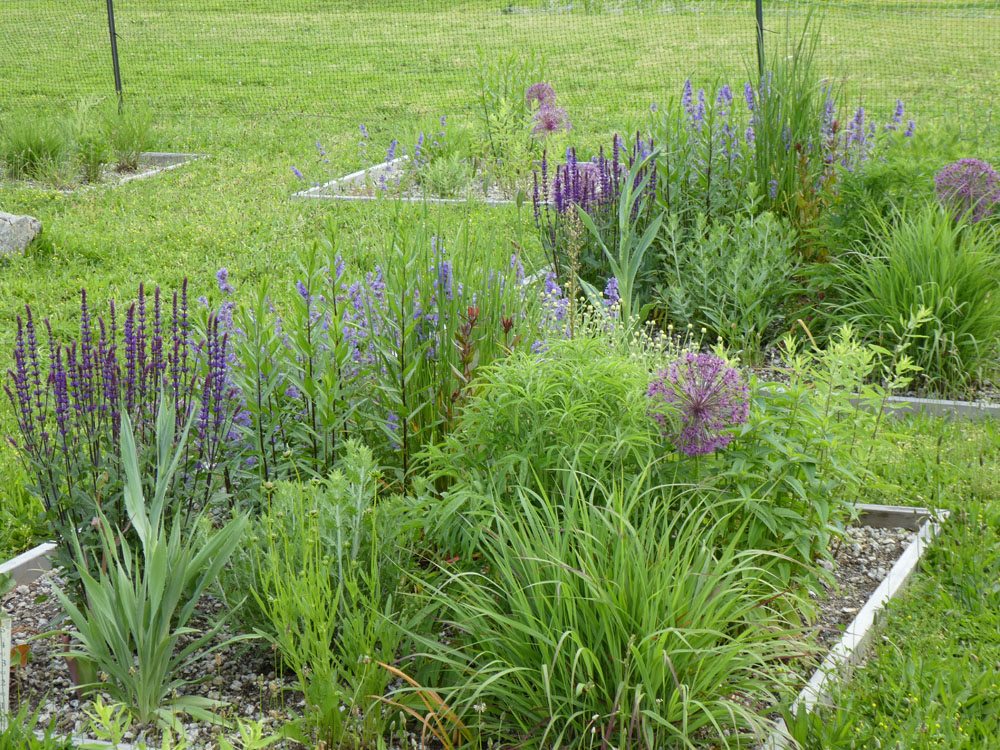
2019 has been a year of observation, as plants have been forced to survive on their own without any supplemental irrigation. As anticipated, weeds have been most plentiful in plots where compost was included in the mixture. Plots with a gravel “crust,” or where the substrate mixture of concrete, sand, and compost was covered by a 1:1 layer of concrete and coarse sand are more weed-resistant, but the inclusion of the fine sand particles some still allowed for slightly more water retention at the surface and thus some weed seeds have been able to germinate and push roots into the underlying substrate. The smaller beds mulched with pure aggregate mixtures are the most weed-resistant, and the two plots where the subsoil was covered with 15 cm of crushed concrete have remained completely weed free for two full growing seasons. While this is a promising development, plants in these plots are much smaller than others, with some species showing barely any signs of growth. Weed species consisted largely of annual or biennial ruderal plants such as foxtail grasses (Setaria viridis and Setaria glauca) and lamb’s quarters (Chenopodium album), or tap-rooted weeds such as dandelion (Taraxacum officinale), black medick (Medicago lupulina) and sweet clover (Melilotus officinalis), all of which were easily removed from the gravelly substrate mixtures. In total, the trial garden was weeded three times over the course of the 2018 season: once in early July, once in late July, and once in early October, and twice in 2019: once in late May, and once in October. The total maintenance time required for 700 square feet of garden in 2019 (spring cutback and weeding) was approximately 3 hours.
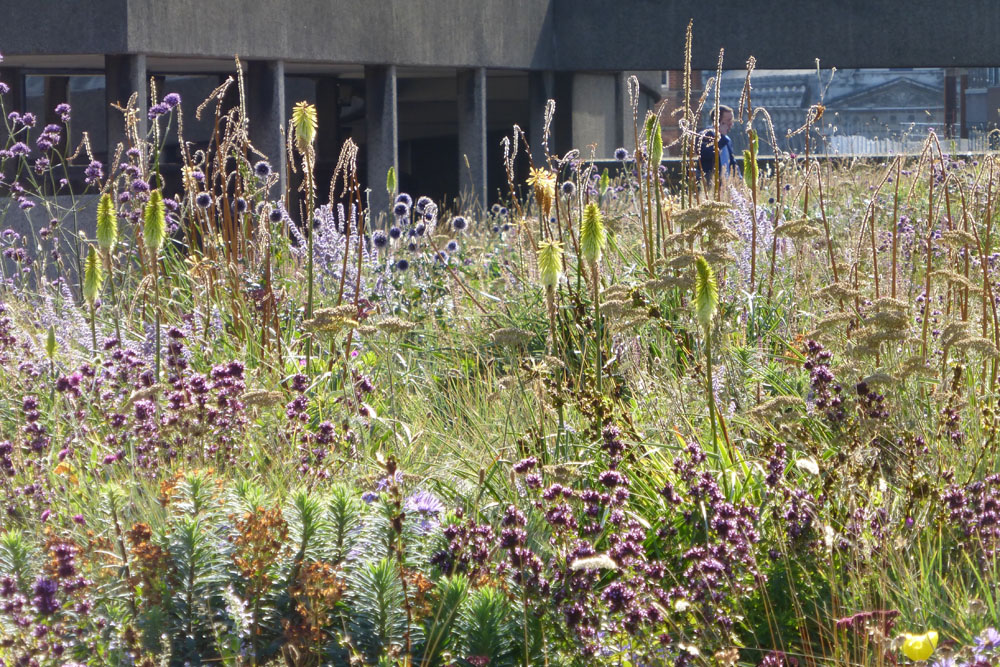
In 2020, I plan to investigate how different designed plant communities, in conjunction with these aggregate substrates, can combine to exert the maximum possible competitive pressure on would-be invaders. The research is new and just beginning, but the potential is enormous.
For a full list of plants, up-to-date photos, and more detailed information about the experiment, visit www.wildbydesign.ca/growing-grit.
Trial Garden Top 10 Performers
Perennials
- Geum triflorum (prairie smoke)
- Monarda fistulosa ‘Claire Grace’ (‘Claire Grace’ wild bergamot)
- Nepeta ‘Joanna Reed’ (‘Joanna Reed’ catmint)
- Penstemon hirsutus (Hairy beardtongue)
- Ratibida pinnata (grey headed coneflower)
- Solidago ptarmicoides (upland white goldenrod)
- Solidago shortii ‘Solar Cascade’ (‘Solar Cascade’ goldenrod)
Grasses
- Bouteloua curtipendula (sideoats grama)
- Panicum virgatum ‘Shenandoah’ (‘Shenandoah’ switch grass)
- Schizachyrium scoparium (little bluestem)
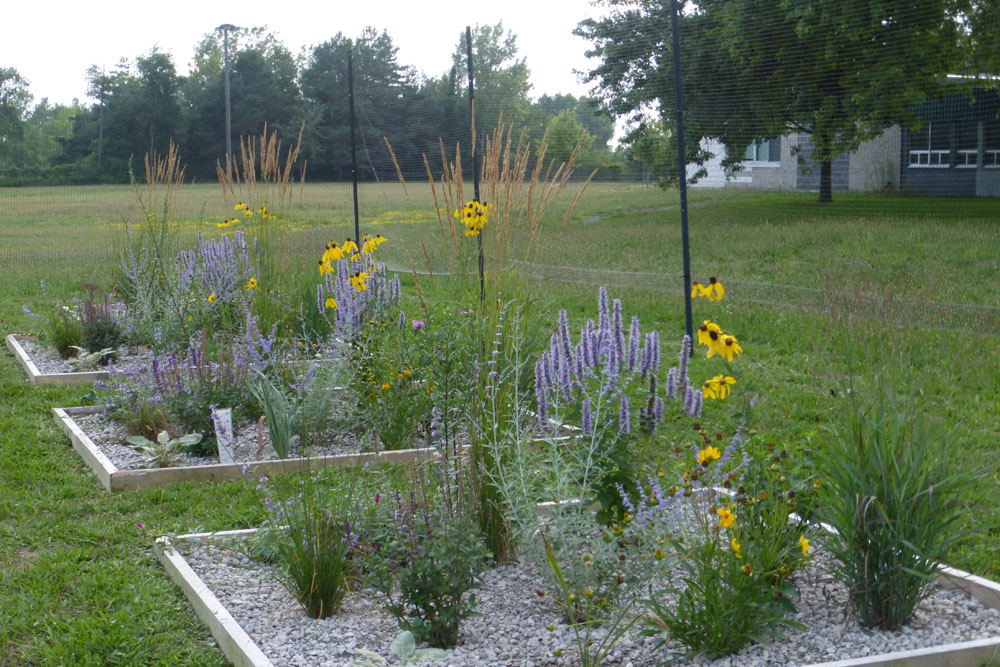
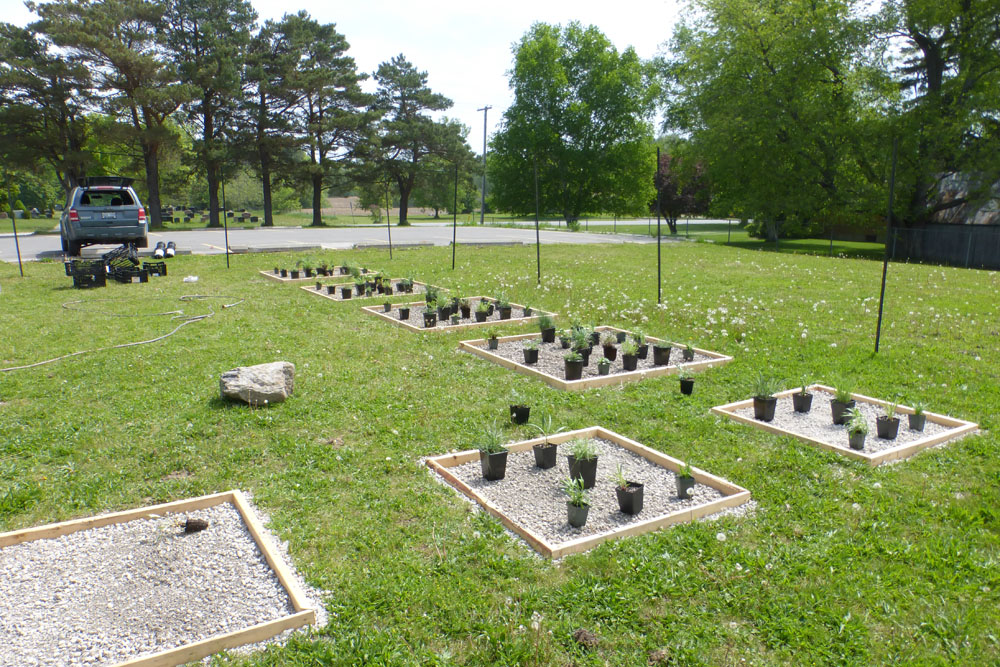
BIOS/ BEN O’BRIEN IS AN ECOLOGICAL LANDSCAPE DESIGNER, RESEARCHER, AND CONSULTANT BASED IN PRINCE EDWARD COUNTY. THROUGH HIS BUSINESS, WILD BY DESIGN, HE CREATES RICHLY PLANTED RESIDENTIAL GARDENS INSPIRED BY THE LOCAL AGRARIAN LANDSCAPE. HIS CONSULTING AND RESEARCH WORK FOCUSES ON THE DESIGN AND MANAGEMENT OF BEAUTIFUL, BIODIVERSE, AND RESILIENT PLANT COMMUNITIES FOR URBAN PUBLIC SPACES.
